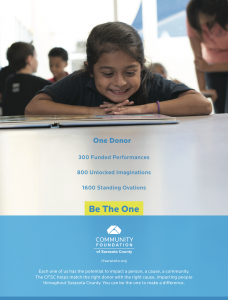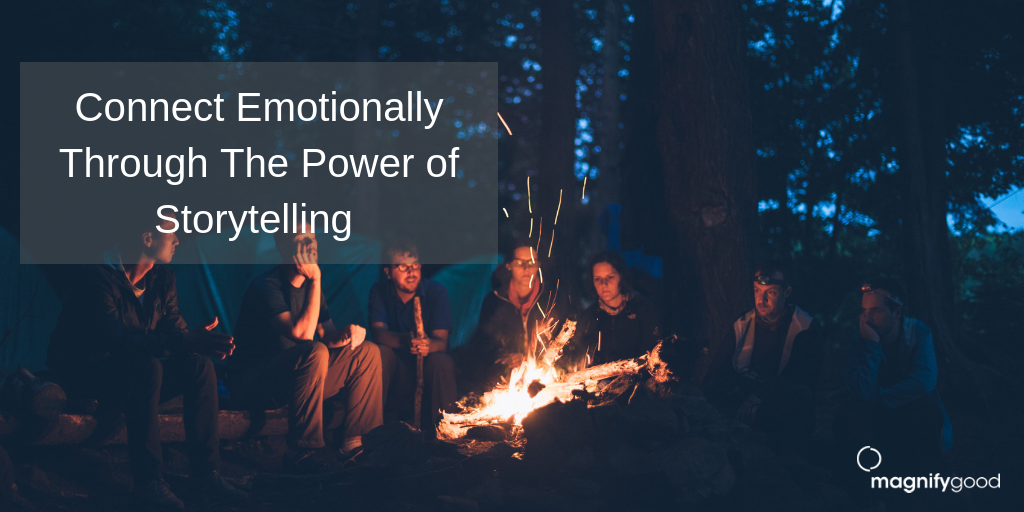Stories are at the center of human connection. We have always used stories as a way to connect emotionally, person-to-person and make sense of our chaotic, ever-changing world. As humans, we can’t help but gravitate toward the emotional pull of a great story.
Telling stories helps us relate to our world. It defines and illustrates our experiences and binds us through our one commonality – our humanity. Stories have the ability to transcend language and culture by evoking emotion.
When we seek to create change, telling stories is one of greatest tools to inspire people to take action and incite empathy among others.
Stories have the power to change hearts and minds. They increase our understanding of complex issues. When we tell stories, we create room for others to insert themselves into our own experiences or the experiences of others.
The power of a great story lies in its ability to resonate with the audience.
Using a more sophisticated framework for your stories could be the key to driving engagement and support for your cause.
Tell stories that make your audience the hero.
There is no denying your organization’s work is essential to your mission, but you need the help of your audience to build movements and strengthen its impact. When telling your stories, remember that your organization is not the hero of the story. The heroes in your story are made up of your audience. 
When the Community Foundation of Sarasota County sought to connect emotionally with its supporters, we helped craft the “Be the One” campaign, which highlighted the impact of one individual. The campaign presented a call to action for supporters, inspiring them to “Be the One” to make a difference. Supporters were inspired to act because it allowed them to see themselves as an important part of the solution.
To encourage others to act, your audience must see themselves as a valid solution to the issue. Without feeling like their actions will make a difference, it is unlikely your audience will accept your call to action.
Use Visual Language
In the social sector, we are often telling stories to outline abstract ideas. Telling stories using visual language paints an image for the audience and creates space for them to insert themselves into the experience. The use of visual language in storytelling increases the likelihood your audience will absorb and engage with your message.
Perhaps what made Dr. Martin Luther King’s “I Have A Dream” his most notable speech — as well as one of the most notable speeches in history — was his use of visual language to express the urgency of freedom in the south. 
“I have a dream that one day even the state of Mississippi, a state sweltering with the heat of injustice, sweltering with the heat of oppression, will be transformed into an oasis of freedom and justice.”
Using words and phrases like “sweltering” and “heat of oppression” provided an immersive storytelling experience for those who watched King give his speech. This created room for those who were blind to the ideas of injustice and oppression, increasing understanding and empathy for victims of segregation.
Visual language sticks and has the power to transform the experience for your supporters, pulling them closer to the ideas your story conveys.
End Your Story with a New Bliss
When you’re telling stories to persuade action, always end with a new bliss. Paint a picture of what the world could be like after your supporters have accepted your call to action. Your heroes need to know there is a reward at the end of their journey.
Presenting a new bliss is your last chance to inspire and drive action for your cause.
Effective stories that connect and spark emotions show how your work creates solutions. The facts and data that drive your mission are important, but alone they will fall short because they don’t resonate with people.
Stories are more authentic and transparent than facts and data filled with jargon.
Stories are an integral part of the human experience and are our best way of connecting emotionally with each other. Utilizing a stronger storytelling framework can transform the way your organization tells its stories. Your organization will be able to tell stories that ignite your supporters and spark actions, fueling a movement for good. Ready to harness the potential of your stories? Download the Nonprofit’s Guide to Growing Donor Engagement With Storytelling to learn how.
As a social sector communications agency, MagnifyGood specializes in elevating the marketing, PR, branding, advertising, and social media of nonprofits, foundations, and other mission-driven organizations. Looking to enhance your donor engagement, create compelling impact stories, establish a brand that aligns with your mission, or explore innovative strategies to connect with your community? Contact us here. Let’s magnify good together.



